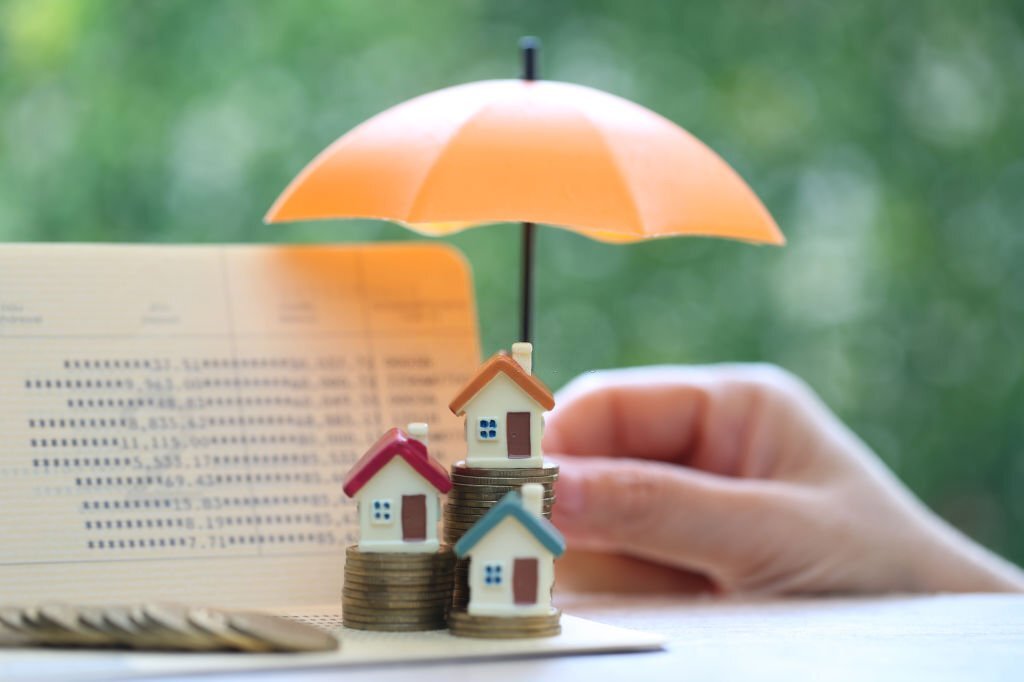Understanding what home insurance covers is crucial to ensure you have adequate protection and peace of mind. In this exhaustive article, we will delve into the various aspects of home insurance coverage, exploring the key areas it typically covers and the specific perils and risks homeowners can mitigate with a comprehensive policy.
Dwelling Coverage:
One of the primary components of home insurance is dwelling coverage, which protects the physical structure of your home. In the event of covered perils, such as fire, lightning, windstorms, or vandalism, dwelling coverage provides funds to repair or rebuild your home. It typically includes coverage for the roof, walls, foundation, windows, and attached structures like garages or sheds. It’s essential to ensure that your dwelling coverage is sufficient to cover the cost of rebuilding your home in the event of a total loss.
Other Structures Coverage:
In addition to your main dwelling, home insurance often includes coverage for other structures on your property, such as detached garages, fences, sheds, and guesthouses. This coverage helps repair or rebuild these structures if they are damaged or destroyed by covered perils. It’s important to note that coverage limits for other structures are usually a percentage of the dwelling coverage limit, and you can adjust them based on your specific needs.
Personal Property Coverage:
Personal property coverage protects your belongings inside your home, including furniture, appliances, electronics, clothing, and more. If your personal possessions are damaged, stolen, or destroyed by covered events such as fire, theft, or vandalism, this coverage provides funds to replace or repair them. It’s important to review the coverage limits and consider adding endorsements or riders to cover high-value items such as jewelry, artwork, or collectibles. Keep in mind that personal property coverage may have sub-limits for certain categories of items, so it’s essential to understand those limitations and consider additional coverage if necessary.
Liability Insurance:
Liability insurance is a crucial component of home insurance that protects you if someone is injured on your property or if you accidentally cause damage to someone else’s property. This coverage can help cover legal expenses, medical bills, and settlements or judgments in the event of a lawsuit. Liability insurance extends beyond your property and can provide coverage for incidents that occur off-premises as well. It’s important to ensure that your liability coverage limit is adequate to protect your assets and future earnings.
Medical Payments Coverage:
Home insurance policies often include medical payments coverage, which pays for medical expenses if someone is injured on your property, regardless of fault. It can cover costs such as hospital bills, doctor’s visits, and even funeral expenses in the event of a fatality. This coverage helps prevent small incidents from turning into costly lawsuits and promotes goodwill between you and your neighbors or visitors.
Additional Living Expenses (ALE) Coverage:
If your home becomes temporarily uninhabitable due to a covered loss, ALE coverage helps with the additional costs you may incur for alternative living arrangements. This coverage can include expenses such as hotel bills, temporary rentals, meals, and storage fees. ALE coverage ensures that you can maintain a similar standard of living while your home is being repaired or rebuilt. It’s important to note that ALE coverage has limits and usually covers the difference between your normal living expenses and the increased expenses incurred due to the loss.
Coverage for Named Perils:
Home insurance typically covers a range of perils, which are events or incidents specified in your policy. These can include fire, lightning, windstorms, hail, explosions, theft, vandalism, and more. It’s crucial to review the list of named perils in your policy and understand the exclusions or limitations to ensure you have adequate protection. Some policies provide all-risk coverage, which means they cover all perils except those specifically excluded, while others may provide named perils coverage.
Additional Coverage Options:
Homeowners can often customize their insurance policies by adding optional coverage or endorsements. These additional options provide coverage for specific risks or situations that may not be covered under standard policies. Some common additional coverage options include:
1. Flood Insurance:
Standard home insurance policies typically exclude coverage for flood damage. Homeowners in flood-prone areas may need to purchase a separate flood insurance policy through the National Flood Insurance Program (NFIP) or private insurers to protect their homes and belongings from flood-related damages. Flood insurance covers damage caused by water overflowing from rivers, lakes, or oceans, as well as heavy rain or melting snow.
2. Earthquake Insurance:
Similar to flood insurance, earthquake coverage is typically excluded from standard policies. Homeowners in earthquake-prone regions may need to purchase a separate earthquake insurance policy to protect their property from earthquake-related damages. Earthquake insurance covers damage caused by seismic activities and can help with the costs of repairing structural damage, foundation issues, and other earthquake-related losses.
3. Sewer Backup Coverage:
Standard policies may not cover damages caused by sewer backups. Adding sewer backup coverage can help protect against the costs associated with repairing damage caused by sewage backup into your home. This coverage can help with the cleanup, repairs, and replacement of damaged items.
4. Scheduled Personal Property Coverage:
For high-value items like jewelry, antiques, or art collections, homeowners can add scheduled personal property coverage to ensure these items are adequately protected. This coverage provides additional coverage limits and protects against a wider range of risks. It often requires appraisals or documentation of the item’s value and can include coverage for accidental loss or damage.
5. Home Business Coverage:
If you run a business from your home, a standard home insurance policy may not adequately cover business-related liabilities or property damage. Home-based business coverage can be added to protect your business equipment, inventory, and liabilities associated with your business operations. This coverage can include protection against business interruption, liability for clients or customers visiting your home, and coverage for specialized equipment or inventory.
6. Identity Theft Protection:
Some home insurance policies offer optional coverage for identity theft protection. This coverage can help with the costs associated with recovering your identity, such as legal fees, credit monitoring services, and lost wages. It can also provide coverage for unauthorized use of your credit cards and other financial accounts.
Understanding Exclusions and Limitations:
While home insurance offers comprehensive protection, it’s essential to understand the exclusions and limitations in your policy. Typical exclusions can include damage caused by earthquakes, floods, acts of war, normal wear and tear, pests, or certain types of personal property, such as motor vehicles. It’s crucial to review your policy carefully, discuss any concerns with your insurance provider, and consider adding specific coverage if needed. Additionally, certain perils or damages may have sub-limits or special conditions, so it’s important to understand those limitations and make informed decisions about your coverage.
Conclusion:
Home insurance provides homeowners with vital financial protection against unexpected events that could result in property damage, loss of belongings, or liability claims. Understanding the various components of home insurance coverage, including dwelling coverage, personal property coverage, liability insurance, additional living expenses coverage, and coverage for named perils, is crucial for homeowners to ensure they have adequate protection. By customizing their policies with optional coverages and endorsements, homeowners can address specific risks and enhance their overall coverage. It’s important to review your policy regularly, consult with your insurance provider, and make necessary adjustments to ensure your home insurance coverage aligns with your evolving needs and provides comprehensive protection for your most significant asset—your home. Remember to compare quotes from multiple insurers, understand the terms and conditions of each policy, and choose the coverage that best suits your requirements and budget. With the right home insurance policy in place, you can have peace of mind knowing that your home and belongings are protected against the uncertainties of life.




